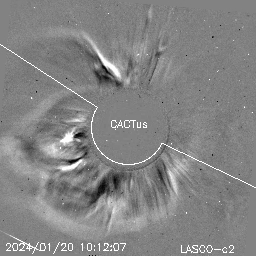Geomagnetic storm forecast - 22nd January 2024
What Has Happened?
A filament eruption observed at 08:40 UT on 20th January 2024 produced an Earth-directed partial halo coronal mass ejection (CME).
The arrival of the CME is expected in the afternoon/evening of the 22nd January, leading to a significant increase in geomagnetic activity. Prolonged STORM periods are anticipated on 22nd and 23rd January, potentially reaching STORM G3 levels.
Assuming clear, dark skies, there is a chance of seeing the aurora tonight (22nd - 23rd January). Those in Scotland, northern England and Northern Ireland have a better chance if the weather is favourable.
Sign-up to receive Geomagnetic Disturbance Alert emails.
Follow us on Twitter:
Follow @BGSauroraAlert for more occasional aurora alerts.
Follow @BGSspaceWeather for daily space weather forecasts.
Glossary
- BGS
- The British Geological Survey is a geoscience research centre that is part of UK Research and Innovation (UKRI) and affiliated to the Natural Environment Research Council (NERC).
- CME or Coronal Mass Ejection
- The eruption of a portion of the outer atmosphere of the Sun into space, caused by rapid changes in its magnetic field. Often occurs along with a solar flare.
- Filament Eruption
- An eruption of solar plasma (i.e. ions and electrons) associated with the upward movement of solar magnetic field lines into the corona. Filaments are usually dark against the bright solar disk but can appear bright (as 'erupting prominences') on the limbs of the Sun against the darkness of space. Filaments are often associated with CMEs


